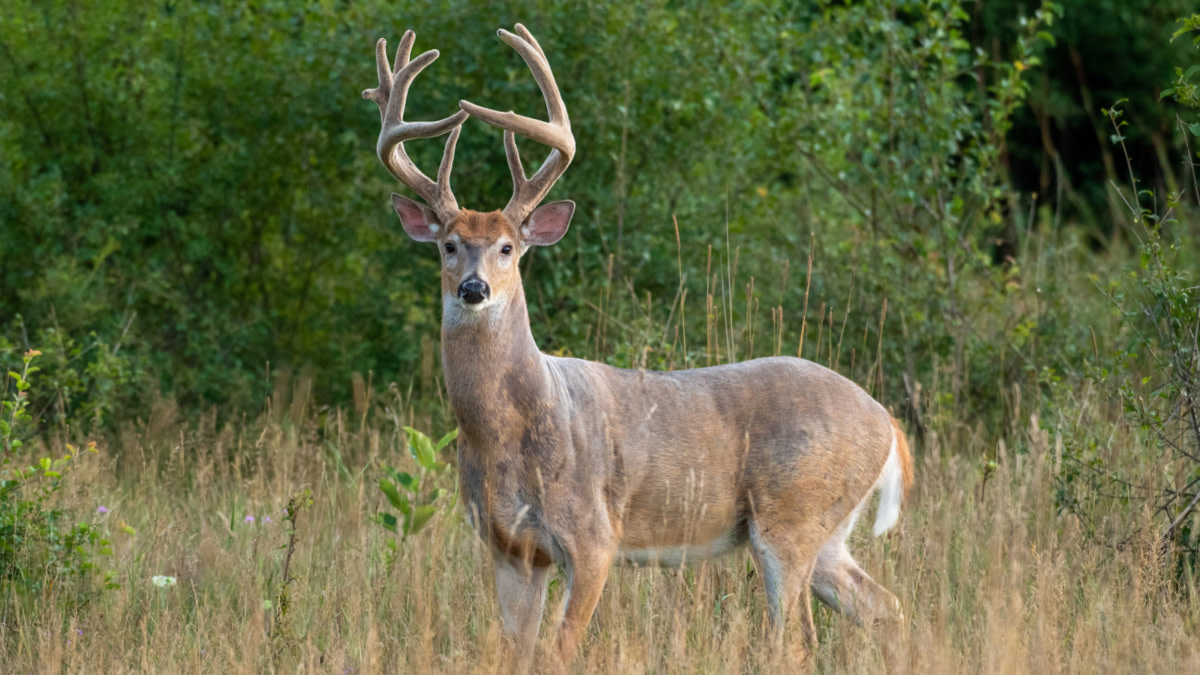
September is a celebrated month among the hunting community. While some hunters focus on bugling bulls or rutting antelope, September is equally tantalizing for whitetail hunters. While keeping areas fresh for the November rut can be a sage strategy for whitetailers, you might be missing out on some of the most productive deer hunting of the season next week. Here’s how to get it done.
Pre-Season Scouting The foundation of a successful early season hunt lies in the preparation. Prior to the start of opening day, deer are generally undisturbed and exhibiting a very regular daily routine. Even the most educated bucks are likely to be daylight active during the dawn and dusk hours. The goal is to study this pattern and act accordingly. Just like killing a bull elk on opener, you can’t enter the woods without knowing what your target animals are doing. Early-season kills necessitate a tight plan.
A good starting point is to map out your hunting areas on onX. For each of your spots, utilize satellite imagery to study the big picture. Locate potential food sources, water sources, and bedding cover. By zeroing in your approach from home, your scouting trips will be more targeted and efficient. Boots-on-the-ground scouting is equally important. Prior to the season (ideally in late winter or early spring), thoroughly investigate these areas looking for old sign, travel corridors, food sources, and water sources. If you’re late to the game, take Tony Peterson’s advice on the first thing you should do when scouting a new area.
Productive Areas Tony’s scouting makes him a regular killer of velvet bucks. For early-season strategies, he recommends hunting food sources for the first couple days of season. After that, move off the food and into the cover to hunt staging areas.
“Deer will be browsing on the same food sources that they have been using all summer,” Tony said. “However, food sources will quickly burn out with small doses of hunting pressure.”
Productive food sources this time of year will vary depending upon your location. Agricultural fields consisting of alfalfa, soybeans, peas, and sorghum are usually favorable in September. In densely forested areas, mast crops and natural browse can be the preferred food source. Clear cuts and burns are worth looking out for as they are often plush with natural browse.
Tony also recommends keying in on water sources. While water sources are a continual need year-round, the drawing power is amplified during early season and periods of warm weather. Tony also recommends focusing on river crossings. “Highly-used river crossings are super easy to find and are a good starting point for any hunt, whether it’s September, October, or November.”
Developing a Plan Once you’ve identified multiple food and water sources on onX, it’s time to start glassing and observing deer movement. Drive back roads and walk trails to glass field edges, meadows, and clear cuts. Cover as much ground as possible until you are able to locate a bachelor group of bucks worth studying. The goal is to locate as many bucks as possible, giving you multiple options in the event that your target buck is no longer hunt-able.
Continue studying the deer movement up until season opener (like literally until the night before). Once the pattern reveals itself, look for setup locations along his travel route that will stack the odds in your favor (such as a terrain feature that funnels movement or a spot that won’t allow wind to swirl).
When putting together your plan, it’s imperative to have multiple options for differing wind directions. You might only have a couple days before the buck changes his pattern, so ideally you’ll have different setups for differing wind directions. It’s easy for hunters to get caught off guard by five straight days of south winds in early September, or a stretch of hunts where the wind is non-existent.
Trail cameras can also play a role in targeting early-season bucks. While beneficial, it’s a common mistake for hunters to put too much stock into trail cams. The reality is that trail cameras are just an extra piece of the puzzle, but they’re not the whole puzzle. Don’t use them in place of digital scouting, boots-on-the-ground scouting, or glassing. A good strategy for patterning early-season bucks is to place cams in staging areas that you’re unable to safely glass from a distance.
Hang and Hunt After studying the deer movement and identifying a suitable location, it’s time to execute your plan. In these early-season scenarios, I highly recommend a mobile trees tand setup. By quietly setting your tree stand the day of the hunt, the deer shouldn’t notice your presence until it’s too late. And if things don’t work out after one or two sits, take down your mobile setup and execute Plan B.
There are a ton of options for mobile setups—to see the favorites of five mobile hunting legends, check out Andy May’s recent article on the topic. Even if you think your system is perfectly dialed, there are certainly some mobile hunting mods you can make to get even more efficient.
There are many avenues for success in the whitetail woods and killing a velvet buck on opening night is one of them. By utilizing the offseason to pattern unpressured deer, the stage is set for a productive hunt. Truth is, that first week of the season is probably the easiest time to kill a good whitetail until the rut arrives. Don’t miss your opportunity.





